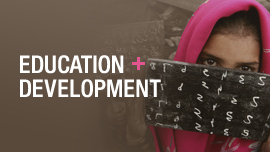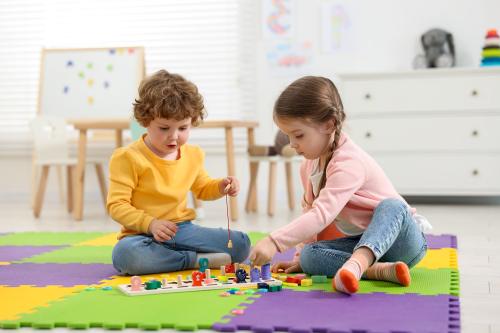The world is changing fast, and education must adapt to prepare children for an uncertain future dominated by AI. What scientists and business people know is that children will need the six C skills: collaboration, communication, content (like how to read and learn), critical thinking, creative innovation, and confidence. The conventional school system that has dominated education for the last 150 years isn’t designed for cultivating some of these skills; for example, children typically learn alone and they may memorize what teachers tell more than they critically think and create. And for children who don’t do well in the system—note 15% of U.S. school children need Individualized Education Plans to navigate it—it certainly does not build confidence. In addition, although this traditional model used to start at age 6, it is increasingly seen infiltrating preschool.
An alternative approach to early education is “guided play,” where children can enjoy learning that feels self-initiated, facilitated by expert teachers. A century-old model that encompasses the main principles of guided play is Montessori education. Many people think of this as an expensive model, but this is not the case. A new study published by the Proceedings of the National Academy of Science journal showed that three years of public Montessori preschool yielded better outcomes while costing $13,127 less per child than traditional public preschool. Even when accounting for its special teacher training and materials, these costs were more than offset by Montessori’s intentionally higher child:teacher ratios. Multiplied by all the children going through pre-kindergarten programs for 3-year olds (PK3) and continuing to kindergarten in the U.S., these cost savings translate into a large benefit.
Using a randomized controlled trial (RCT), the study involved 24 public Montessori schools in 10 states and regions across the U.S. All the schools were oversubscribed for pre-kindergarten to 3rd grade programs—although they were not especially strong among public Montessori schools, judging by their third-grade test scores. The schools did meet certain criteria suggesting they had bona fide Montessori programs, which is important because “Montessori” is not a trademarked term. Children who got in through a random lottery process were compared to ones who did not—roughly 240 in the first group and 340 in the second. When they started school, and at the end of their PK3 and PK4 years, there were no differences between the children who were admitted by the lotteries and children who were not admitted.
At the end of kindergarten, however, there were several important differences favoring the Montessori group. Specifically, children who won the lottery to attend Montessori (about one-half of whom were still attending it then) were better readers and had better short-term memory, executive function, and social understanding than children who had not gotten in. For a school study, these differences were large. For example, a child who would have been at the 50th percentile in reading or short-term memory had they attended a traditional school would have been at the 71st percentile had they attended a study Montessori school. This is particularly notable because it is a field trial of an existing intervention, meaning that the Montessori programs were not implemented by the experimenters. 91% of such interventions yield null results. And this is not the first Montessori study to show such strong outcomes—other RCTs and two meta-analyses concur.
What accounts for these effects? Maria Montessori (1870-1952) was an Italian physician who decided to rethink education by watching children closely. She came up with a model that is more consistent with the ways in which children learn in most settings. Children are in 3-year age groupings (3 to 6 in this case) in large classrooms (she recommended at least 25, with 40 preferred, to encourage peer learning) with one trained teacher and an assistant. Studies show that young children engage in peer interaction more in Montessori than in traditional classrooms, and even recent observational findings in the U.S. suggest that little peer-to-peer interaction is going on in U.S. preschools or kindergartens today. In Montessori, children get individual or small group lessons with curated materials that convey the learning, and then are free to interact on their own with those materials and their peers. There are no grades or gold stars; children learn for their own sake. The new study shows that they really do learn under these conditions. And this study is not a one-off. All three RCTs of authentic public Montessori 3 to 6 programs find this array of positive outcomes.
Guided play pedagogical models are consistent with the science of how children learn. They bring more joy to teachers and better learning to students. Such programs generally reach higher income populations, and yet this study (and others) showed that lower income children were particularly impacted by the program. Montessori education fits within the class of guided play models that can fundamentally reshape education to better prepare students with the breadth of skills they need for a changing world. It is time education policy wake up to this tried and true alternative to the traditional model, so we can help prepare children for the new realities we face.
The Brookings Institution is committed to quality, independence, and impact.
We are supported by a diverse array of funders. In line with our values and policies, each Brookings publication represents the sole views of its author(s).








Commentary
Guided play in pre-K yields better outcomes at a lower cost: The promise of public Montessori schools
November 6, 2025